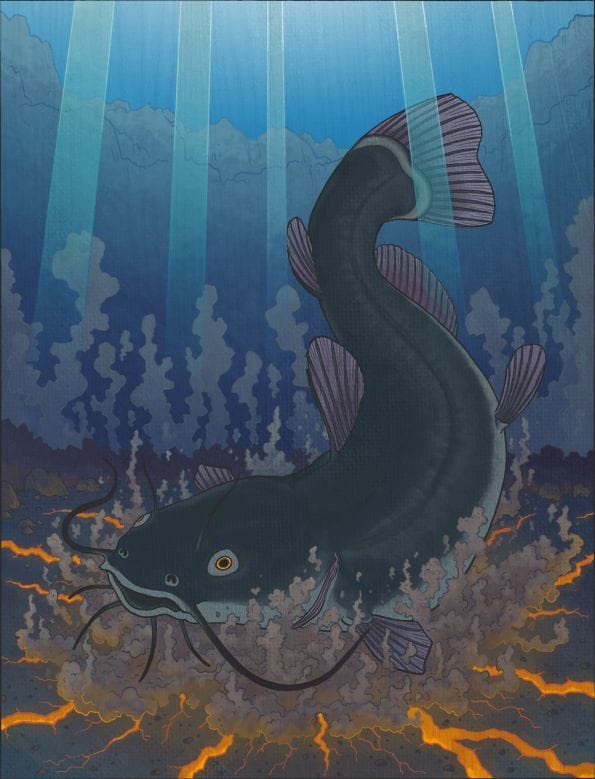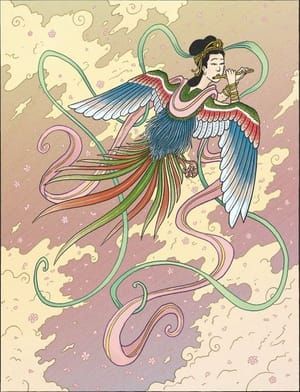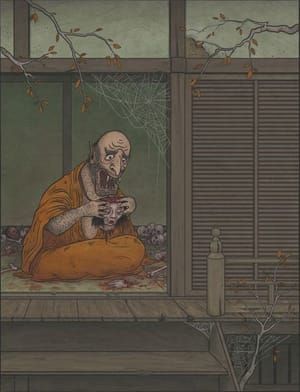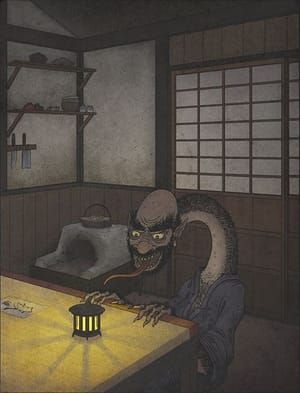

Ōnamazu, 2015
Matthew Meyer
大鯰
As their name suggests, ōnamazu are gigantic catfish which live in the muck and slime of the waterways around Japan. They also inhabit large caverns deep underground.
Ōnamazu behave much like their smaller cousins. They dig in the muck, and thrash about when disturbed or excited. Due to their titanic mass, the thrashing of ōnamazu is considerably more violent than ordinary catfish, to the point where they are dangerous to humans. When these monstrous fish get excited, they shake the earth with their violent thrashing, causing devastating earthquakes in the areas near where they live.
Ōnamazu do not normally interact with people, however during the Edo period they were popularly depicted in newspaper illustrations. Usually these pictures showed a huge, grotesque catfish being subdued by a large number of people, gods, or even other yokai, desperately trying to calm its thrashing.
Long ago, common belief was that earthquakes were caused by large dragons which lived deep in the earth. During the Edo period, the idea of catfish causing earthquakes gradually began to displace dragons in popular lore as the origin of seismic activity. By the 1855 Great Ansei Earthquake, the ōnamazu had become the popular culprit to blame for earthquakes. This was due mostly to the hundreds of illustrations of thrashing catfish which accompanied newspapers reporting the news of that disaster. They were so popular they spawned an entire genre of woodblock print: namazu-e (catfish pictures).
The reason catfish came to represent earthquakes was due to a large number of witnesses observing catfish behaving oddly—thrashing about violently for seemingly no reason—just before the earthquake. Rumor quickly spread that that catfish had some kind of ability to foresee the coming disaster. Since then, the catfish has regularly appeared as a symbol for earthquakes—either as the cause or as a warning sign of the coming disaster. Recent studies have shown that catfish are in fact very electrosensitive and do become significantly more active shortly before an earthquake hits—showing that there is more to this myth than meets the eye!
The Kashima Shrine in Ibaraki prefecture is the source of a famous story about ōnamazu. The deity of the shrine, a patron deity of martial arts named Takemikazuchi, is said to have subdued an ōnamazu. He pinned it down underneath the shrine, piercing its head and tail with a sacred stone which still remains in the shrine today—the top of the stone protrudes from the ground. Earthquakes that take place during the 10th month of the lunar calendar—”the godless month,” when the gods all travel to Izumo—are said to be due to Takemikazuchi’s absence from the shrine.
During the 2011 Tōhoku disaster, the Kashima Shrine was badly damaged by an earthquake. The large stone gate was destroyed, stone lanterns were knocked down, and the water level in the reflecting pond changed. The gate was rebuilt in 2014.
Matthew Meyer
artistArthur
Wait what?











